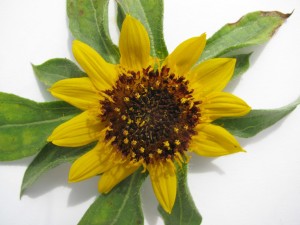Category : News
Published : April 29, 2013 - 3:41 PM
An Inventory of Crop Wild Relatives of the United States has just been published in Crop Science.
Crop Wild Relatives (CWR), the wild and weedy cousins of the plants that feed and clothe the world, are important genetic resources for crop breeding, used to improve pest and disease resistance, increase tolerance to environmental stress, improve yield, and facilitate breeding techniques. As wild plants are increasingly threatened by habitat destruction, invasive species, and climate change, scientists and conservationists are working to understand where important CWR are distributed and to prioritize both species and geographic areas for conservation actions.
North America, north of Mexico, has a remarkably rich flora, with approximately 7% of all known plants, but despite this diversity, a relatively short list of crop plants have been domesticated in the region. Some of the most notable crops that were domesticated include sunflower and pepo squash in the Pre-Columbian era, and more recently blueberry, cranberry, blackberry, and pecan. The number of CWR from the region that are closely related to the worlds crops may thus at first glance be estimated to be fairly small.
Three factors increase the number of potentially valuable CWR from the region significantly:
- The relatives of a complex of globally important crop species that originated in Mesoamerica, including corn, a number of bean and squash species, chili pepper, American cotton, and tobacco are distributed in the southern regions of the United States.
- A number of crops domesticated in Europe and other in other temperate regions of the world are related to species occurring in the United States (e.g. strawberry and hops).
- Approximately 4,000 plant species have been introduced to the region since the Colombian Exchange, including weedy relatives of crop plants.
Several U.S. government entities support activities focused on CWR conservation and availability, but significant gaps in conservation remain.
Our recent publication presents an inventory of taxa occurring in the United States, and suggests a prioritization of species in contribution toward a national strategy for the conservation of U.S. CWR. The inventory will provide the foundation for subsequent efforts to map the distribution of potentially important CWR in order to identify areas of the country with the greatest need for conservation.

